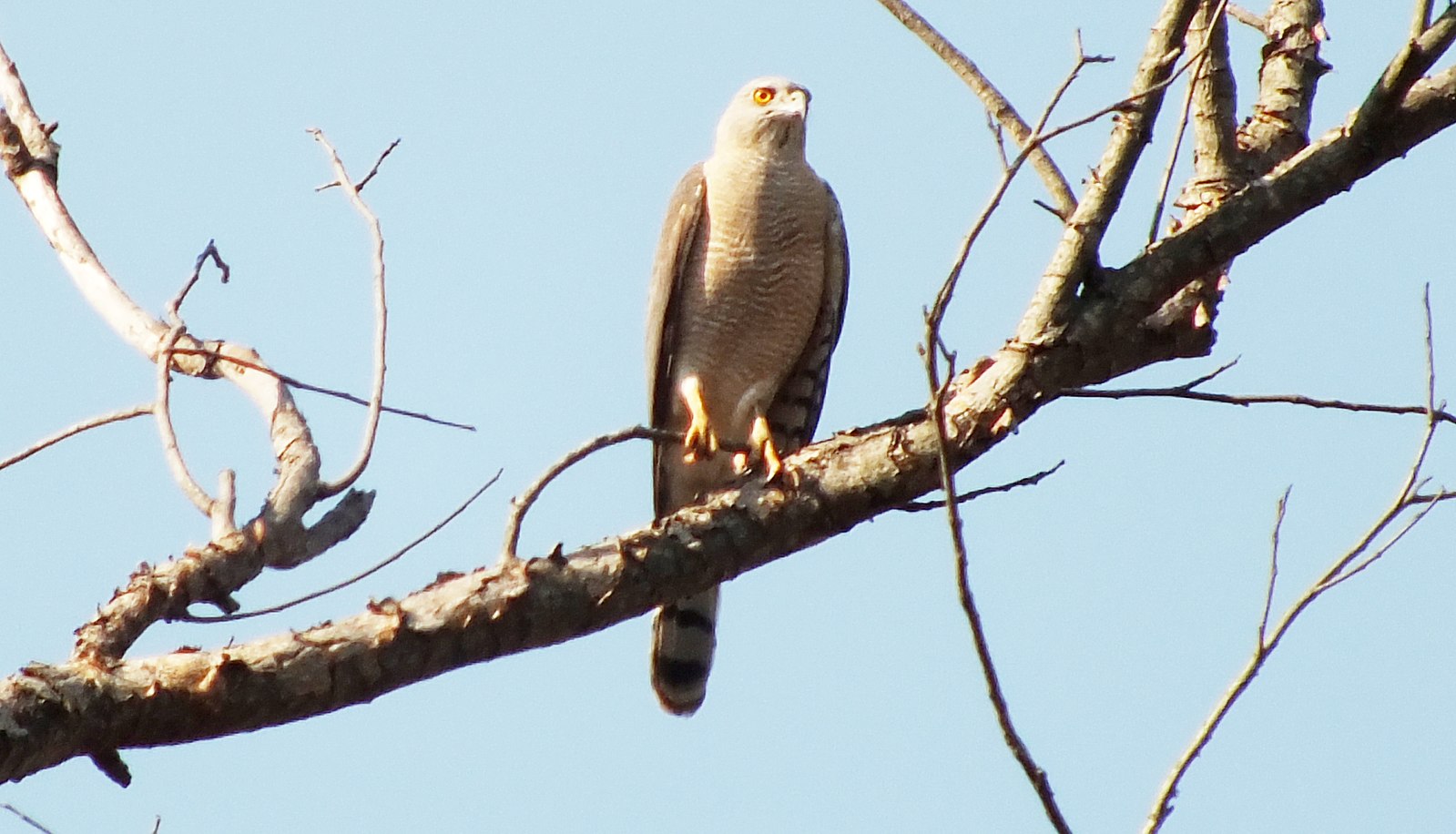A Shikra, scientifically known as Accipiter badius, is a bird of prey that belongs to the family Accipitridae. In the wild, the Shikra has an average lifespan of two to seven and a half years, but in captivity, it can live up to 15 years or more, provided they receive proper care and nutrition.
Lifespan of Shikra in Captivity
The Shikra is a relatively smaller raptor, with males measuring between 25-30 cm in length and weighing 100-200 gm, while females measure between 30-45 cm and weigh 130-260 gm. In captivity, the Shikra can live up to 15 years or more, which is significantly longer than their average lifespan in the wild.
Here are some key factors that contribute to the extended lifespan of Shikras in captivity:
-
Consistent and Nutritious Diet: In captivity, Shikras are provided with a balanced and nutritious diet that includes a variety of prey, such as rodents, small birds, and insects. This ensures that they receive all the necessary nutrients to maintain their health and longevity.
-
Veterinary Care: Captive Shikras have access to regular veterinary check-ups and medical treatment, which helps to identify and address any health issues early on, preventing them from becoming more severe.
-
Controlled Environment: Captive Shikras live in a controlled environment, where they are protected from predators, extreme weather conditions, and other environmental stressors that can shorten their lifespan in the wild.
-
Reduced Risks: In captivity, Shikras are not exposed to the same risks and dangers that they would face in the wild, such as hunting accidents, territorial disputes, and exposure to diseases or parasites.
-
Stress Management: Captive Shikras are provided with enrichment activities and a stress-free environment, which can help to reduce the negative impacts of stress on their overall health and longevity.
Breeding and Nesting Behavior of Shikras in Captivity
 Image source: SHIKRA by Shiv’s fotografia
Image source: SHIKRA by Shiv’s fotografia
When it comes to breeding and nesting behavior, Shikras in captivity exhibit similar patterns to their wild counterparts. Female Shikras are particularly selective when it comes to nesting, and both males and females work together to build a loose and messy nest made from twigs and sticks, typically in trees.
The breeding season for Shikras in India is typically during the summer, between March and June. During this time, the female lays a clutch of 3-4 eggs, which hatch after an incubation period of 18-21 days.
In captivity, Shikras may be provided with nesting materials and suitable nesting sites to encourage natural breeding behavior. However, it’s important to note that successful breeding in captivity can be challenging and may require specialized care and management.
Conservation Status and Threats
The Shikra is currently labeled as a species of least concern by the IUCN, as population numbers are stable and there are thought to be between 500,000 to 999,999 individuals worldwide. However, human activity, such as habitat loss due to deforestation, poses the most significant threat to this species.
In captivity, Shikras can play an important role in conservation efforts, as they can be used for educational purposes, research, and even reintroduction programs. By understanding the factors that contribute to their longevity in captivity, we can better inform conservation strategies and ensure the long-term survival of this species.
Conclusion
In conclusion, with proper care and nutrition, a Shikra can live up to 15 years or more in captivity, which is significantly longer than their average lifespan in the wild. Factors such as consistent and nutritious diet, veterinary care, controlled environment, reduced risks, and stress management all contribute to the extended lifespan of Shikras in captivity.
While the Shikra is currently not considered a threatened species, human activity, such as habitat loss, poses a significant threat to their populations. By understanding the unique characteristics and needs of Shikras, we can better inform conservation efforts and ensure the long-term survival of this remarkable bird of prey.


